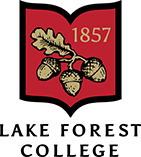Prunus virginiana (Chokecherry) Rosaceae
Other common names for Prunus virginiana: common chokecherry, black choke cherry, red chokecherry, eastern chokecherry, whiskey chokecherry, jam cherry and bitter-berry are a few other common names for Prunus virginiana

As its name would suggest, chokecherry does cause those who eat the cherry to gag. Prunus virginiana (Chokecherry) fruits are edible but bitter; so when a person unknowingly consumes the bitter fruit it is regurgitated.
Inter-species Interactions with Prunus virginiana
Human Use: Prunus virginiana is a food source for humans, the cherries are used to make jams, jellies and preserves. The fruits of Chokecherry are valuable commercially. Chokecherry were first cultivated in 1724 on North American orchards. Chokecherry are also used for conservation, the shrubs are planted in shelterbelts and windbreaks in an effort to minimize dust storms and soil erosion. The chokecherry shrub have also been planted to prevent soil erosion.
According to the USDA Prunus virginiana plant fact sheet, precaution should be taken as the plant can be poisonous. The seeds, stem, leaves of Prunus virginiana produce hydrocyanic acid. As a result, before the fruits are released into the market they are treated in an effort to deactivate the poiso nous glycosides( molecules in which a sugar molecule is bonded to a non sugar) contained within the cherries. Death and illnesses have been reported from eating the untreated cherries.
Non-Human: Since the leaves, stem, seed, bark of the chokecherry are toxic it can be poisonous to husbandry animals. Cattle and sheep are mainly affected by the cherries and this usually happen when they consume a quarter of their body weight .
Rabbits, birds, bears and other wildlife animals seek out the cherries aid in dispersing the seeds.
Ecological Characteristics:
 States highlighted in green are where Prunus virginiana plants can be found..
States highlighted in green are where Prunus virginiana plants can be found..
Lifespan: Chokecherry is a native perennial plant. Chokecherry can either be woody, deciduous(seasonal) shrub or small tree. The plant can be grown in a wide variety of soils.
Leaves/Flower: The leaves of chokecherry are dark green, glossy on the topside and pale on the underside. Leaves are alternate, simple and glabrous. The flowers of chokecherry are perfect and aromatic, they are are cylindrical racemes 3 to 6 inches long of 5 white petals. Flowers can be seen before leaves fully develop.
Fruit: Ripe cherries of Prunus virginiana range form crimson to deep red.
Reference:
http://www.nutriology.com/glycoside.html
https://plants.usda.gov/core/profile?symbol=PRVI
Click here to go back to ES 203 Home Page.
ES 203: SPRING FLORA OF THE GREAT LAKES
You can highlight additional information here or add more related links.
• You can link to other LFC.com pages
• You can link to an outside url
• You can link to a files such as a pdf

